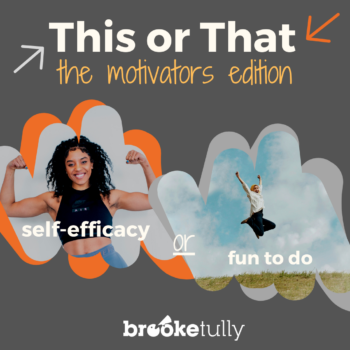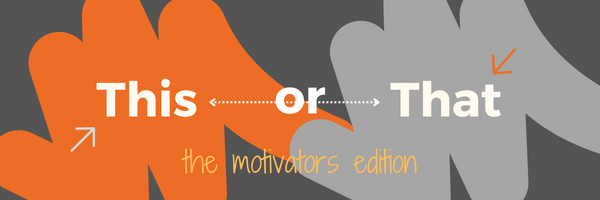
This or That: Self-efficacy or Fun To Do?

Scenario 4: Pushing for Climate Action
The behavior change goal: We want individuals to push their local government representatives to take stronger action to address climate change.
This will be achieved through the use of online petitions hosted by nonprofit organizations with policy departments.
Conservation benefit: We’re all familiar (maybe too familiar) with the benefits of reducing the negative impacts of climate change. More so, we know what’s at risk if proactive steps are not taken to reduce carbon emissions and switch to cleaner, renewable energy sources. It’s an urgent and global need.
Learn more about the need to tackle climate change here.
Target audience: Individuals in the Millenial and Gen Z generations residing in countries that signed the Paris Climate Agreement but have not yet implemented sufficient solutions.
They believe that climate change will impact them personally in their lifetime and are concerned about it.
As a result, they are more likely to make lifestyle changes to reduce their personal impact and hold others accountable for their sustainability actions.
“Millennials and Gen Zs, on the whole, seem more persistent, more vocal, and more apt than others to question and even upset the status quo. These generations believe in the power of individuals to create change.”
» from The Deloitte Global 2022 Gen Z and Millennial Survey
Deterrents: What can make the action of signing a petition difficult for this audience to do?
» Forgetfulness. Social media feeds and inboxes have new content entering them constantly, which makes it easy to forget (or lose) a post you intended to take action on. If the petition is not kept top-of-mind with the audience, then it can quickly become a distant memory.
» Tech glitches. This audience is online and mobile savvy, with little patience for glitchy petition sites that give unnecessary error messages, don’t adapt to mobile platforms, or request too much personal information. If a glitch prevents them from signing a petition once, then they won’t come back to try again.
» Skepticism. Although NGOs are increasingly seen as trusted sources and effective drivers of change, trust in government institutions is falling across the globe (2022 Edelman Trust Barometer). This can result in audience members choosing not to sign the petition due to their skepticism that it will result in real change.
There are other possible deterrents for this scenario, but let’s stick to these three for the exercise.
Let’s meet our motivators:
How it works: Helping an audience believe in themselves and their ability to make a difference empowers them to take action.
How we could use it here:We can provide feedback loops with confirmation that the growth in petition signatures is applying the necessary pressure on government representatives for them to make progress on climate action measures.
How it works: Adding fun, creative, and engaging elements to the action itself increases interest and motivation to do it.
How we could use it here: We could host petition-signing parties that bring groups of people together to sign the petition and enjoy other fun activities (e.g., dancing). It uses two motivators at once: fun + social.
Which would you choose to get this target audience to sign your climate action petition: this or that???
Before I reveal my pick, I recommend thinking about the last petition you signed.
Did it use either of these motivators?
More than likely, it used a combination of social proof by showing the number of people who have already signed and scarcity by highlighting how there is only a small amount of time left to add our signature.
That combination can, and certainly does, work to get signatures. Yet, there is room to do so much more.
Adding in new and different motivators, like we’re exploring in this series, can help our efforts stand apart from the crowd and go further in engaging audiences.
I digress.
I’m going with…self-efficacy!
While I am a BIG fan of infusing fun into our work wherever and whenever it’s appropriate, the motivator that is needed most for this scenario is self-efficacy.
And within self-efficacy, the most critical ingredient is providing proof and confirmation that each individual signature supports bigger, collective, real-world change.
Our audience of Millenials and GenZs are already eager to get involved.
“Millennials and Gen Zs are actively seeking to influence policy and business actions on matters that are important to them, including environmental issues, inequality, and discrimination. They see each at a tipping point and seem eager to provide the necessary push to hold institutions accountable, in order to bring about change.”
» from The Deloitte Global 2022 Gen Z and Millennial Survey
Therefore, they don’t need the allure of fun activities to be interested in the topic.
In fact, this audience might be wary of an effort that leans too much into the fun motivator since they are on high alert for greenwashing scams.
What they want to see is:
Proof that the petition is not just a marketing or PR ploy.
Confirmation it’s making an impact among the intended audience towards the desired goal.
Validation that their time, energy, and effort are truly making a difference. (This validation makes it more likely that they’ll ask others to sign the petition, too.)
Feedback loops showing the progress and wins (even small wins) achieved along the way.
Delivering on the above will take more work on our end.
Yet, that investment will result in much deeper, consistent engagement among two important generations at the forefront of creating change.


